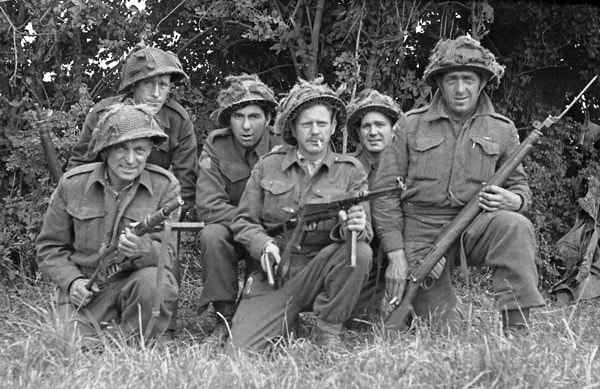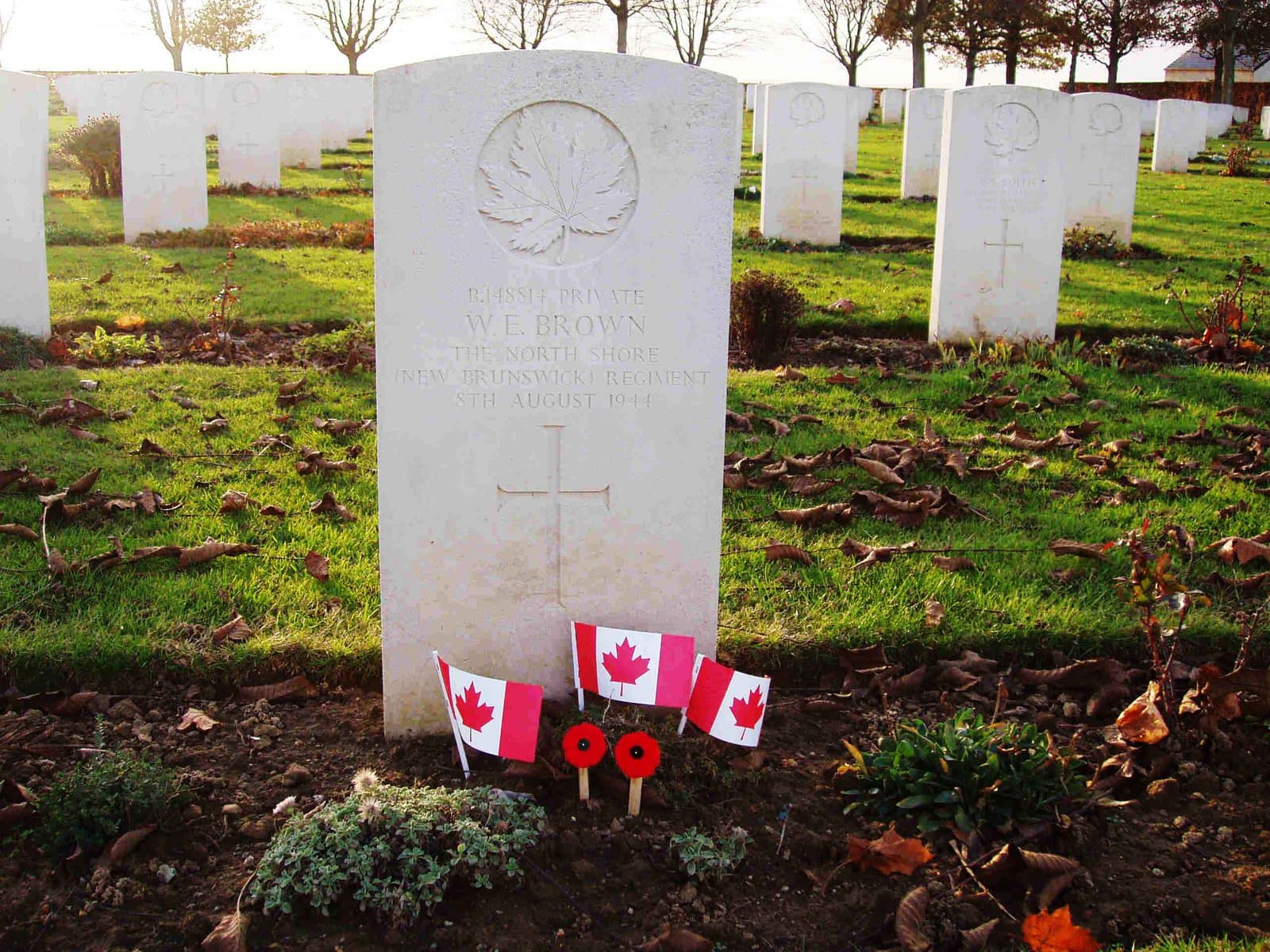It’s been a century since Niagara-on-the-Lake’s iconic clock tower cenotaph was erected. Then, in 1926, the Township of Niagara unveiled its own memorial in Queenston. In recognition of those who fought and died in two world wars and beyond, NOTL historian Ron Dale has been researching the stories of the people – all men – whose names are engraved on the two cenotaphs. This is one in a series of stories documenting and remembering the sacrifices of those commemorated on the municipal memorial in Queenston.
The men of the North Shore (New Brunswick) Regiment had suffered heavy casualties since D-Day, June 6, 1944.
The regiment lost 50 men that day landing at the Nan Red Sector of Juno Beach.
In the days following, the Allies continued to expand the beachheads.
The city of Caen represented a major strategic obstacle to the British and Canadians. It took them almost a month to finally drive the enemy from the Caen area.
On July 4, participating in Operation Windsor in an attack to capture the Carpiquet Airfield, 5.6 kilometres from Caen, the North Shore Regiment suffered 130 casualties.
The chaplain of the regiment described it as “the graveyard of the regiment.”
The North Shore regiment continued to fight and lose men, reinforced several times with replacements sent from England. Among these reinforcements was Pte. William Edward Brown of St. Davids.
The oldest son of William Brown and Beatrice Spencer of Mervin, Sask., he was born on Jan. 16, 1920, and moved to St. Davids in 1939, working at the Welland Chemical Works.
He met Lillian Rose Fehr, also from Saskatchewan, and they married on June 17, 1940.
William and Lillian had two children prior to 1943 when William volunteered for active service in the Canadian Army. He enlisted on June 30, 1943, and immediately began training at various camps in Ontario.
He was considered fully trained by June 18, 1944, and was granted “embarkation leave” for a short period before shipping off for England. It was the last time he saw his family.
He landed in England on June 24 and was shipped to France on July 18 as a reinforcement for the North Shore Regiment, joining them in the field two days later.
Among other operations, a plan was drawn up for a lightning strike on German defences south of Caen to capture the high ground north of Falaise and cut off the retreat of the German army.
The plan, code named Operation Totalize, was to form the army in columns led by tanks, followed by infantry troops in newly improvised armoured personnel carriers known as “kangaroos.”
The way was to be prepared with bombardments by Royal Air Force and United States Army Air Force heavy bombers. The idea was to bomb German defences to prepare the way for a rapid assault by columns of Allied tanks and armoured personnel carriers.
On the night of Aug. 7, phase 1 of Operation Totalize was launched with a bombardment of German defences on the flanks of a corridor along the Caen-Falaise Road by planes of the RAF.
This was followed by four columns of tanks and personnel carriers advancing in the dark, navigating by the dim light of searchlights bouncing off clouds.
This was followed by phase 2, in the early hours of Aug. 8, targeting the next line of German defences.
Again, it featured an advance of columns preceded by a bombardment of enemy defences by the U.S. Army Air Force. The North Shore Regiment was to advance in this phase 2 attack.
What happened next was truly tragic. Due to several factors, the Americans bombed short.
The first bombers dropped their loads too close to Allied lines and subsequent bombers dropped their bombs on seeing the explosions of earlier bombers.
This was known as “bomb creep” with several heavy bombs hitting Canadians and Poles waiting to advance toward the enemy.
The North Shore Regiment was caught in this “friendly fire” while its convoy was moving through Faubourg de Vancelles.
More than 70 men of the regiment were wounded. Thirty were killed that day. Among them was Pte. William Brown.
His death left Lillian to raise their two young boys and it was a struggle.
In May 1945, she received a government cheque with the balance of William’s bank account – $32.28 – and a month later she received a War Service Gratuity of $117.21. She went on to rebuild her life, eventually remarrying.
William Brown was initially buried in the Mondeville Temporary Canadian Military Cemetery.
His remains were reinterred after the war in the Bridgeville-sur-Laize Military Cemetery, halfway between Caen and Falaise. He is commemorated on the cenotaph in Queenston.











